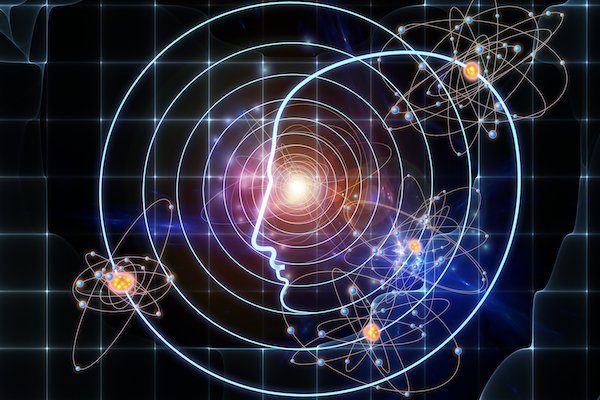Seems to me the brain is an essential part of the equation in 3D, otherwise, why do we have a brain that appears to be intricately connected with consciousness/information processsing, again, here in 3D. We can assume that consciousness is not limited to the brain, and that it exists as a non-physical phenomenon, but it certainly involves the brain in 3D, because the manifestations of consciousness involves the brain and its various components.
Yep, I agree. Examples of brain damage hindering proper functioning of consciousness in very specific ways pretty much seal the deal. But then there are the anomalies like people with almost totally missing brains who seem to function just fine, and the cases like those talked about in the last session where the soul can still direct a body that has already 'died'. I guess those are special cases. The mind doesn't necessarily
need the brain in all circumstances, but there is usually a tight correlation between them when functioning normally in a 3D environment.
The idea of music, or making up music in our heads, is the same as any other kind of information, and information is, by definition, first and foremost a non-physical 'thing'. Anyone seeking to understand psi in 3D humans would have to look at the physical components or aspects that facilitate psi, because by definition they are involved given that we are 3D beings. At another level of non-physical reality, ideas and information can likely be apprehended in a non-physical way, which may also be the ultimate reality or truth about information and how it is transmitted/received. But, again in 3D, that requires, or at least uses, physical components as part of the process.
I think that's very well put. It seems to me that in 3D, one of our main purposes is to experience life as physical beings, and learn what lessons we can in that form. Bodies are useful in that they limit the vastness of the cosmos down into one relatively confined node of experience: the body and whatever falls within the range of the body's senses. We need something to focus on, otherwise the sheer amount of data around us would be overwhelming.
Brains facilitate this by utilizing a vast network of specialized 'information receptors' (e.g., nerves, sense organs) which channel that information to a super complex information processing system (the brain). The brain then sifts through and synthesizes those vast streams of information into what we perceive as the conscious moment: those things in our environment that are most directly relevant to our experience as 3D beings learning lessons in a 3D world. And the brain itself has all kinds of specialized parts for dealing with specific kinds of information: internal processes, visual info, auditory info, balance, bodily equilibrium, etc. This is where Damasio is helpful, despite his Darwinism. All this information is combined into one 'whole' in the manner described by Hicks and Walling.
Where the physical and the mental meet is in the actual conscious experience of this process. The way Griffin puts it, our mind 'prehends' our brain. It actively perceives the final synthesis the brain creates for it. And when the mind makes a
choice, it affects the brain in such a way as to put the 'plan' into action. Both Griffin and Carpenter would say that this effect of the mind on the brain is PK. One of the ways (maybe
the way) that the mind influences the body is by initiating brain states, which then pass on that information to the body. For example, the mind wants to move a finger, which influences the brain to initiate activity in the motor cortex, which then sends the signal to actually move the finger.
Anyone seeking to understand psi in 3D humans would have to look at the physical components or aspects that facilitate psi, because by definition they are involved given that we are 3D beings.
Based on the research so far, the primary things that are known to facilitate psi are mental states: openness, relaxation, outgoingness (in situations involving performance), etc. Those mental states will naturally have physical correlates: the patterns of brain activity associated with them, and the effects of those state on the rest of the body, like heart rate, skin conductance, release of hormones, etc. Same with the things that are known to hinder psi expression: anxiety, cognitive work, etc.
The brain seems to be a two-way channel. It receives information from the body which it channels to the mind, and receives information from the mind that it channels to the rest of the body. Take a couple examples from lab studies. A subliminal threat (e.g., a threatening image flashed too quickly to be consciously perceived) triggers a "threat brain state", which will cause your heart rate to increase a bit, your skin to sweat a bit more, etc. The unconscious mind interprets that information as threatening based on memory: "mean faces are potentially dangerous, prepare yourself for possible danger!" And so the body unconsciously prepares itself. All you are aware of is a slight sense of unease or anxiety.
Now, let's say a threatening person is staring at you, but you can't see them. On an unconscious, non-physical level, your mind is aware of this. It is receiving a vague impression that it recognizes as potentially threatening. This too activates the "threat brain state", but it does so without the influence of the senses.
So basically, it seems to me that brain states can be triggered from 'below' or above'. Just looking at the brain, you won't be able to tell which it is. But that would be an interesting study, e.g., a ganzfeld with brain scans, with the goal of seeing if there is any unusual brain activity with the 'hits' as opposed to the 'misses' - or if the only brain activity you see is activity typically associated with mental imagery.




